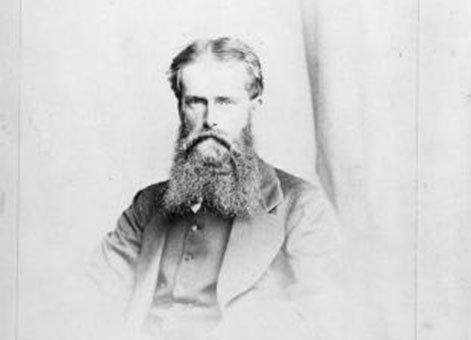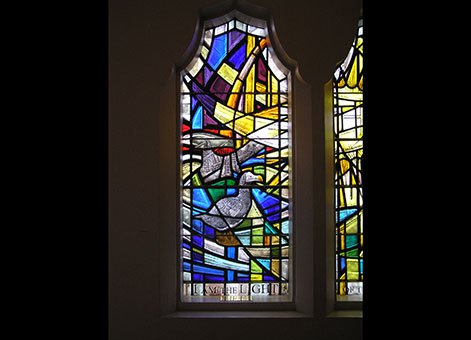Harry Higginson was born in England and educated in Leicester.

Harry Pasley Higginson [circa 1876], Alexander Turnbull Library, Wellington, New Zealand.
Early career
He was apprenticed to Sir W Fairburn between 1855 and 1859. For the following two years Higginson was employed in Russia on railway construction. In 1862 he was sent to Mauritius to lay out and construct a system of light railways and was engaged in this work until 1865, when he returned to England. In 1867 he went to India and, for the next four years, was employed on the construction of canals and railways.
Higginson was elected an Associate Member of the Institution of Civil Engineers in 1868. He returned to England in 1871 and was elected a Member in 1872 before coming to New Zealand as Superintending Engineer for Railways and other public works in the South Island.

Higginson Memorial Window, St Paul's Cathedral, Wellington, 2011. IPENZ.
New Zealand career
He commenced his New Zealand career on 8 March 1872. He reported on Thames mining water supply very early. He is sometimes referred to as Inspecting Engineer. In 1873 he made proposals for harbour improvements at Westport and for coal export. One of his notable works at that time was the Waimakariri Gorge Bridge, combined road and railway.
In 1878, he took up private practice in Dunedin and was responsible for the Lyttelton Waterworks, the Waimea Plains and Balclutha Bridge, also in 1879 for the repair and extension of the Rangitata Bridge on solid steel piles after its damage during the great flood of 1876.
With C Napier Bell and WN Blair he was a member of a commission which investigated the flood of 1878 in the Clutha River and recommended works for the safety of Balclutha. He then became Engineer to the Inch Clutha River and Road Board and carried out the protection and draining of the Island. In 1880, Higginson surveyed a line for a proposed railway to serve the Waikaka Valley via Tapanui, which was not built.
In 1882 he was awarded the Telford premium by the Institution of Civil Engineers for his paper on the Kawarau Suspension Bridge, between Gibbston and Arrowtown. In the same year his attention moved to the North Island, having been appointed Chief Engineer for the design and construction of the Wellington-Manawatu Railway. He held this position until 1886. During 1888 he was employed by the Petone Borough for a short time in connection with their roads and drainage.
In 1887 Higginson was appointed Engineer and Manager of the Wellington Gas Works. He retired from the gas works in 1898. He died in Wellington two years after his retirement.
More information
Source
Frederick Furkert, Early New Zealand Engineers (Wellington: Reed, 1953), pp.189–90.
Further reading
Karen Astwood, Learning from experience: Three case studies of New Zealand natural disasters and engineers’ responses, 1878–1953,’ 4th Australasian Engineering Heritage Conference Proceedings (November 2014).
